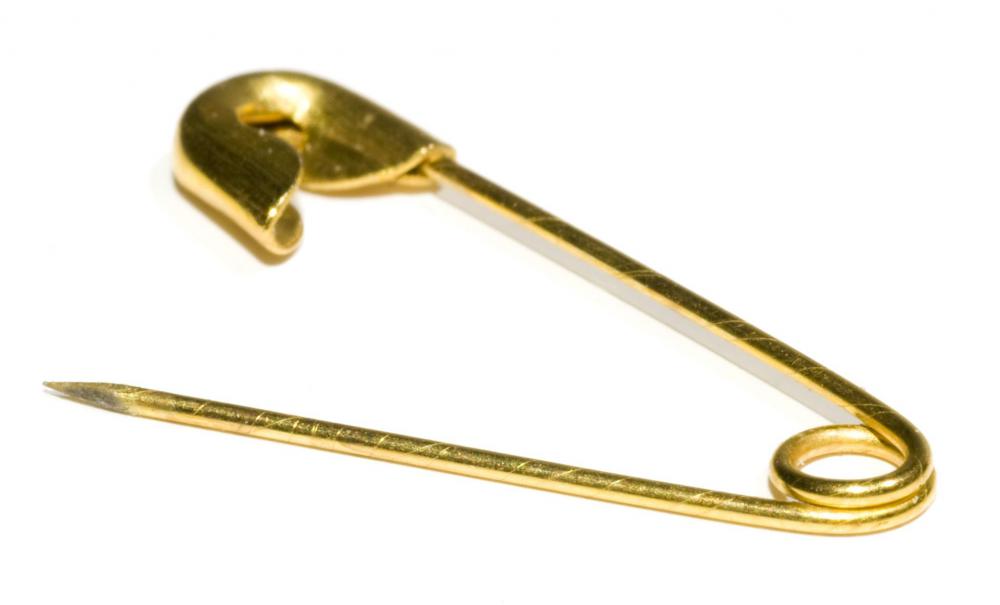At WiseGEEK, we're committed to delivering accurate, trustworthy information. Our expert-authored content is rigorously fact-checked and sourced from credible authorities. Discover how we uphold the highest standards in providing you with reliable knowledge.
What Are the Best Tips for Wrapping Bandages?
An elastic bandage is often used to wrap strains and sprains to help reduce swelling and limit mobility. These are usually wrapped snugly around the injured appendage, with the edges of the bandage overlapping. Rolled gauze, on the other hand can be used to stop bleeding, and prevent micro-organisms and debris from entering an open wound. When wrapping bandages around an open wound, gauze pads should also be used, and the bandage should be wrapped a few inches (7.6 centimeters) on either side of the wound as well. Neither of these bandages should be wrapped too tight, since this can cause circulation problems.
Elastic bandages are wide stretchy strips of fabric. They can help apply compression to an injured body part. This helps reduce or prevent swelling, and they can also limit the mobility of an injured area to help promote healing. Wrapping bandages of this sort around an ice pack on an injured area can also help hold it in place.

These types of bandages are most commonly used for strains and sprains. When wrapping bandages around these types of injuries, one should start several inches away from the affected area. To begin, the bandage can then be wrapped a few times around an appendage, such as a leg or forearm. The bandage can then be wrapped with its edges overlapping in a spiral pattern. Typically, these types of bandages are not cut, but the entire bandage is used to cover the injured area and beyond.

After bandages of this sort are wrapped, they must be secured to prevent them from falling off. Usually, elastic bandages will come with something to secure them, like metal clips or Velcro®, after they have been wrapped around the injury. Safety pins or tape can also be used to secure these types of bandages.
Rolled gauze is a long strip of gauze-like material. It is typically used to help stop the bleeding in an open wound. This type of gauze is often included in many first aid kits, and it is excellent to help secure a bandage to a wound on a leg, arm, or head.

Before wrapping bandages of this sort around wounds, the bleeding should be stopped and the area must be clean. A fresh gauze pad can then be placed over the wound to help absorb any blood or discharge from the wound. To begin, the rolled gauze can be wrapped around an appendage a few times, below the wound. The bandage can then be spiral wrapped upwards, covering the wound, and extending a few inches (7.6 centimeters) beyond it. When wrapping bandages around the head, fresh gauze can be placed on the wound, and the rolled gauze can be wrapped around the circumference of the head.
Like an elastic bandage, rolled gauze should also be secured after wrapping it around an injured area. Surgical tape, or medical tape, is often used to do this. If this is not available, the bandaged can also be tied securely.

Bandages should not be wrapped so tight that they cut off an injured person's circulation. If tingling, discoloration, or numbness is present in the area, the bandage should be removed and rewrapped. As a general rule, one should be able to slide one finger between a bandage and the skin.
AS FEATURED ON:
AS FEATURED ON:
















Discussion Comments
I think one of the most important things to pay attention to when bandaging a wound is to make sure that the gauze or bandage doesn't stick to the wound. Otherwise, when blood dries, the gauze and bandage will stick to the wound making it very painful to remove it later. It can also cause the wound to bleed again.
There are non-stick dressings and bandages sold at pharmacies for this reason. These are meant for wounds that are still bleeding. They absorb liquid but don't stick.
@bear78-- You should use the figure eight technique when bandaging those areas to make a comfortable and secure wrapping.
So for the wrist or the hand, start wrapping around the wrist and then bring the bandage across the palm. You can wrap around the palm and thumb before returning to the wrist and attach the bandage at the wrist.
For the ankle, it's the same idea. Start at the ankle and after several wraps, move down to the center of the foot, going back and forth from the foot to the ankle to make it secure.
This technique may require some practice but I'm sure you'll get it right.
I have a hard time wrapping my ankle and hand with bandages. It's difficult to wrap these areas in a way that the bandage will remain intact without becoming loose.
Post your comments